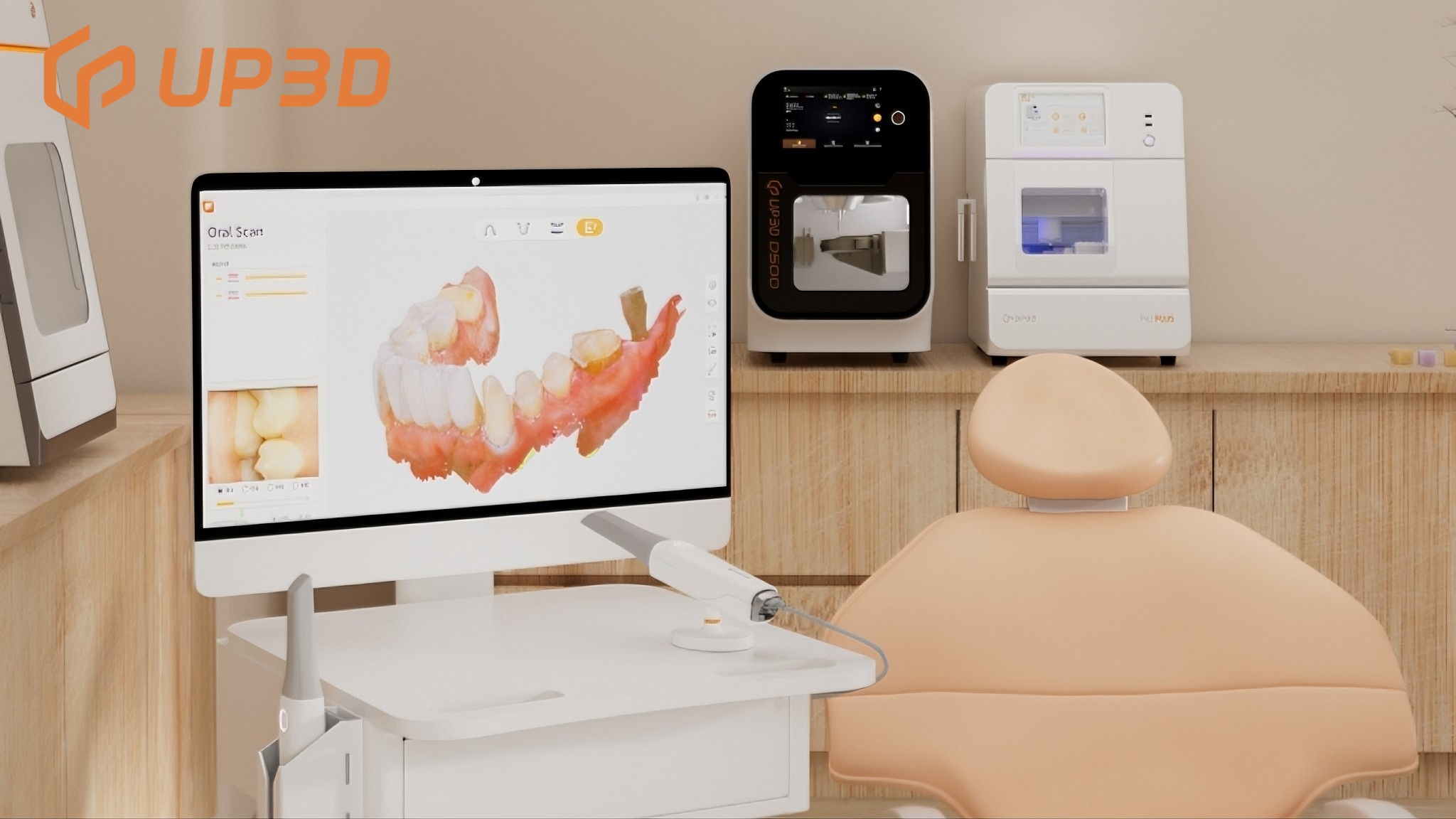Digital technology is reshaping the way dental restorations are performed. For decades, clinics have relied on external dental labs to fabricate crowns, bridges, and implant-supported restorations. While this has ensured high-quality craftsmanship, it has also led to long turnaround times, higher costs, and less control over final outcomes.
With the rise of chairside milling and in-house lab solutions, clinics now have an alternative: handling at least part of their restorations on-site.
But how do chairside and lab-based workflows compare? More importantly, what factors should a clinic consider when choosing the right approach?
Chairside Restorations: Faster, But Is It the Right Fit for Every Case?
The Growth of Same-Day Restorations
In recent years, there has been a shift toward single-visit dentistry, where patients can receive a permanent crown, inlay, or veneer in just one appointment.
This eliminates the need for:
✔ Temporary restorations
✔ Additional patient visits
✔ Waiting for lab turnaround
Cost Savings vs. Equipment Investment
By handling restorations in-house, clinics can reduce outsourcing costs, but is it always a better financial decision? The answer depends on case volume and workflow efficiency.
Clinics that perform a high number of single-unit restorations per month often find that chairside milling quickly pays for itself. However, smaller clinics need to carefully evaluate whether their case load justifies the investment.
Material Considerations in Chairside Milling
While chairside milling offers efficiency, it is primarily suited for certain materials, such as:
✔ Glass ceramics (high esthetics, but not ideal for long-span bridges)
✔ Composite resin & PMMA (temporary or esthetic restorations)
Clinics that frequently work with implant-supported restorations or zirconia-based prosthetics may find chairside systems too limited—which is where a hybrid approach may be more beneficial.
Dental Lab Restorations: Still Essential for Complex Cases?
Why Many Clinics Still Rely on External Labs
For multi-unit bridges, full-arch restorations, and implant cases, traditional dental labs remain an essential partner. Their advantages include:
✔ Access to a wider range of materials
✔ Hand-layered ceramics for highly esthetic restorations
✔ Technician expertise in complex cases
However, outsourcing to a lab means:
✘ Longer turnaround times (days to weeks per case)
✘ Higher per-unit costs
For clinics looking to reduce dependency on labs, integrating some level of in-house production may provide a more flexible and cost-effective solution.
The Hybrid Model: Why Many Clinics Are Bringing Milling In-House

Rather than choosing between chairside and lab-based restorations, many clinics are now adopting a hybrid model, where they:
✔ Use chairside milling for single-unit cases
✔ Use an in-house lab workflow for more complex restorations
Expanding Capabilities Beyond Chairside Milling
For clinics handling a mix of simple and complex restorations, adding an in-house dry milling solution allows them to produce:
✔ Zirconia-based restorations (for durability and strength)
✔ Multi-unit bridges & implant prosthetics
✔ Soft CoCr sintering metal frameworks
This approach helps clinics reduce outsourcing costs, gain greater quality control, and provide faster case turnaround for a broader range of restorations.
Choosing the Right Milling Workflow for Your Practice
For clinics considering an in-house milling strategy, key factors to evaluate include:
✔ Material requirements – Do you need to work with zirconia or metal frameworks?
✔ Production volume – How many cases per month can justify the investment?
✔ Complexity of restorations – Are most of your cases single-unit or multi-unit?
By carefully balancing chairside capabilities and in-house lab workflows, clinics can find a cost-effective, patient-friendly approach that works for their needs.
Finding the Right Balance for Your Clinic
Digital dentistry is changing the way clinics operate. While chairside solutions provide speed and efficiency, some cases still require the expertise of a dental lab.
By implementing a hybrid workflow, clinics can:
✔ Deliver same-day restorations when speed is the priority
✔ Handle more complex restorations in-house without outsourcing everything
✔ Gain better control over quality and costs
With the right balance, clinics can future-proof their restorative workflows, making them more efficient, cost-effective, and patient-centered.









